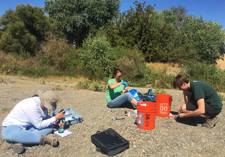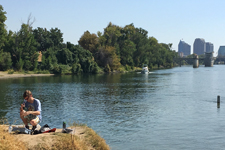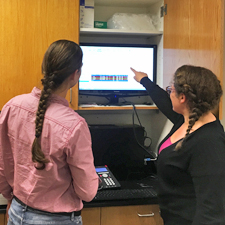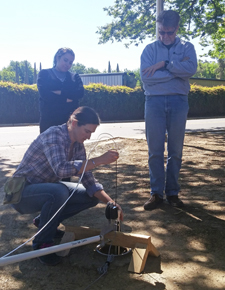Groundwater dynamics after California drought
Summary:
As part of California’s 2014 Sustainable Groundwater Management Act, Sacramento area groundwater basins were designated as a high priority for management under groundwater sustainability plans. Determining sustainable groundwater use is not possible without first quantifying groundwater extraction and recharge. This project characterized groundwater recharge using groundwater age, recharge location, and recharge temperature. Results from the project were compared to a similar study performed in pre-drought conditions to investigate changes in aquifer recharge, and to develop a groundwater flow model for the area. This information is valuable for local water stakeholders working to create a groundwater sustainability plan.
Investigator:
Amelia Vankeuren
Assistant Professor, Geology Department
California State University, Sacramento
Project description:
Sacramento area groundwater basins have been designated high priority under the 2014 Sustainable Groundwater Management Act. This means that the basins are required to develop groundwater sustainability plans. Determining levels of sustainable groundwater use is not possible without first quantifying recharge to ensure that groundwater removed does not significantly exceed the amount added. This project aimed to characterize the aquifers within east Sacramento following California’s historic five-year drought.
It was anticipated that the Lower American River is the primary recharge source for the aquifers. River flows were exceptionally low due to the drought and groundwater pumping was accelerated to supplement the limited surface water availability. It was therefore hypothesized that groundwater recharge did not keep up with extraction, drawing flow from other areas of the aquifer and depleting the groundwater supply.
The project involved sampling water from sixteen monitoring wells and from surface water bodies in potential areas of recharge. Tritium and dissolved noble gases were analyzed to determine the recharge source location and seasonal timing, and described the flow path of groundwater. Results were used to develop a groundwater model to understand past flow and predict future aquifer behavior. Results were also compared to similar analyses performed in pre-drought conditions, enabling investigation of changes in aquifer dynamics during California’s ongoing drought.
Results from this research provide valuable insight into recharge mechanisms and groundwater dynamics for east Sacramento aquifers. Quantifying recharge mechanisms and rates is critical for calculating sustainable groundwater yield as local groundwater sustainability agencies develop their groundwater sustainability plans.




